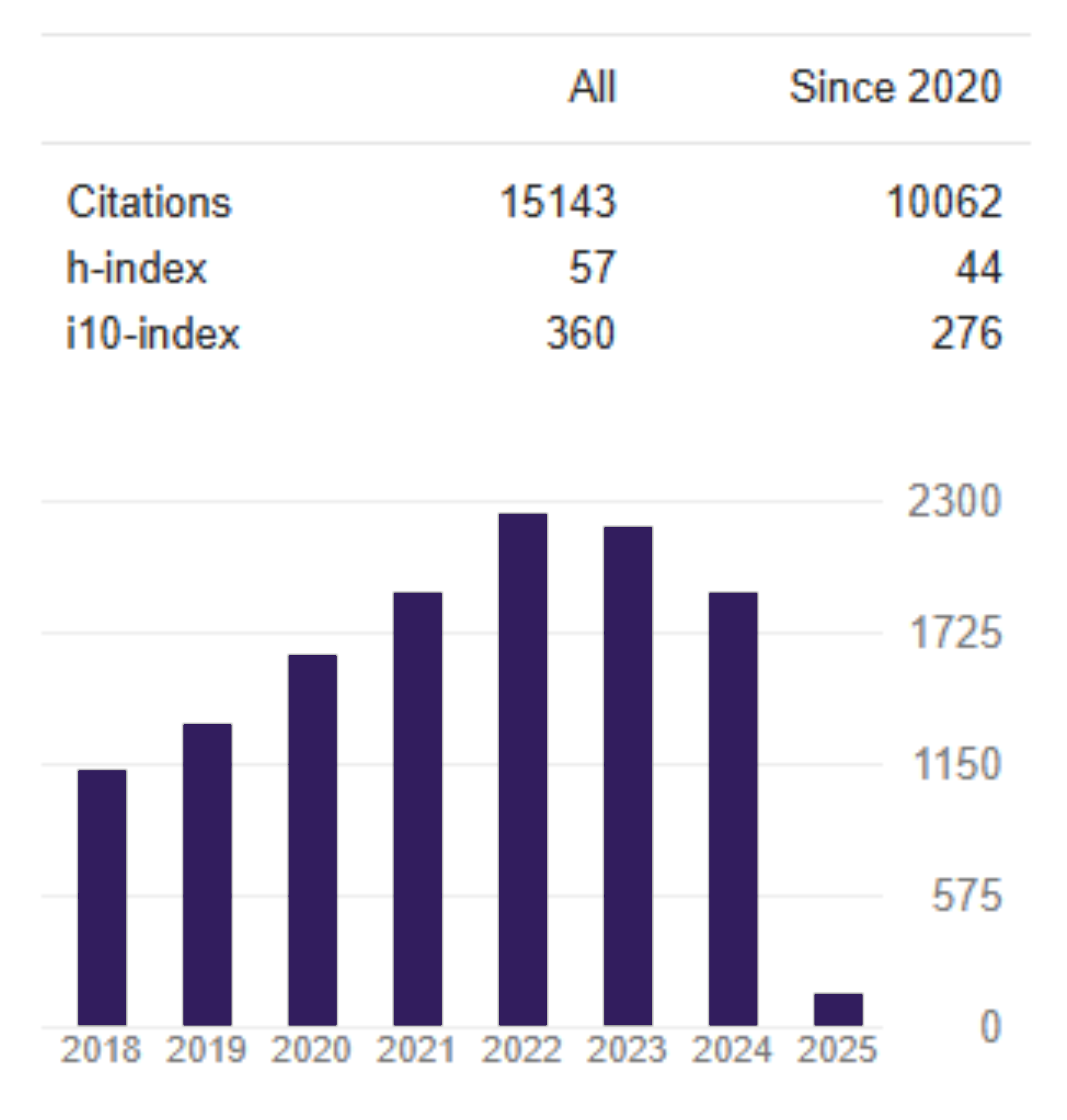The Effect of Fintech Loans on Commercial Bank Margin
DOI:
https://doi.org/10.26905/jkdp.v26i4.7865Keywords:
Bank Margin, Fintech, Conventional BankAbstract
This study aims to examine how far competition between commercial banks and fintech firms impacts the margins of commercial banks in Indonesia. Panel data regression analysis using the random-effects model was conducted on the financial data of 84 commercial banks from 2018 to 2021. This study found that the growth of fintech firms did not affect decreasing commercial banks’ margins. However, fintech loans’ growth was found to significantly and negatively effecting commercial banks’ margins, Meaning that fintech loans’ growth decreases the margins of commercial banks in Indonesia. Bank size, non-performing loan (NPL), and capital ratios do not significantly affect commercial banks’ margins. This research ultimately provides input for making fintech interest rate policies and also input for commercial banks to adopt technology so that they do not seem old-fashioned and convoluted. This research only examines the influence of fintech firms on commercial banks, so future research could examine the effect on different types of banks, such as Islamic banks and rural banks.
Downloads
References
Akter, R., & Roy, J. K. (2017). The Impacts of Non-Performing Loan on Profitability: An Empirical Study on Banking Sector of Dhaka Stock Exchange. International Journal of Economics and Finance, 9(3). https://doi.org/10.5539/ijef.v9n3p126
Almulla, D., & Aljughaiman, A. A. (2021). Does financial technology matter? Evidence from an alternative banking system. Cogent Economics and Finance, 9(1). https://doi.org/10.1080/23322039.2021.1934978
Anto, R., Pangestusti, I. R. D., & Purwandari, E. N. (2021). Determinants of bank efficiency in asean5: Size as a control variable. Universal Journal of Accounting and Finance, 9(4). https://doi.org/10.13189/ujaf.2021.090402
Birchwood, A., Brei, M., & Noel, D. M. (2017). Interest margins and bank regulation in Central America and the Caribbean. Journal of Banking and Finance, 85. https://doi.org/10.1016/j.jbankfin.2017.08.003
Brandl, B., & Hornuf, L. (2020). Where Did FinTechs Come From, and Where Do They Go? The Transformation of the Financial Industry in Germany After Digitalization . Frontiers in Artificial Intelligence . Retrieved from https://www.frontiersin.org/article/10.3389/frai.2020.00008
Carlson, M., & Wheelock, D. C. (2018). Near-money premiums, monetary policy, and the integration of money markets: Lessons from deregulationCarlson, M. and Wheelock, D. C. (2018) ‘Near-money premiums, monetary policy, and the integration of money markets: Lessons from deregulation’, Journal of. Journal of Financial Intermediation, 33. https://doi.org/10.1016/j.jfi.2016.09.001
Fadli, J. A., Sakti, I. M., & Jumono, S. (2021). Market Power and Bank Liquidity Risk: Implementations of Basel III using Net Stable Funding Ratio Approach. Jurnal Keuangan Dan Perbankan; Vol 25, No 2 (2021): April 2021DO - 10.26905/Jkdp.V25i2.5525 . Retrieved from https://jurnal.unmer.ac.id/index.php/jkdp/article/view/5525
Jackowicz, K., KozÅ‚owski, Å., Kuchciak, I., & Marcinkowska, M. (2020). Local banks in social media: determinants and consequences. Economic Research-Ekonomska Istrazivanja , 33(1). https://doi.org/10.1080/1331677X.2020.1773892
Jagtiani, J. (2018). Do fintech lenders penetrate areas that are underserved by traditional banks? Journal of Economics and Business, 100, 43–54. https://doi.org/10.1016/j.jeconbus.2018.03.001
Kabir, M. N., & Worthington, A. C. (2017). The ‘competition–stability/fragility’ nexus: A comparative analysis of Islamic and conventional banks. International Review of Financial Analysis, 50. https://doi.org/10.1016/j.irfa.2017.02.006
Kowalewski, O., & Pisany, P. (2022). Banks’ consumer lending reaction to fintech and bigtech credit emergence in the context of soft versus hard credit information processing. International Review of Financial Analysis, 81. https://doi.org/10.1016/j.irfa.2022.102116
Le, T. T., Mai, H. N., & Phan, D. T. (2021). Fintech Innovations: The Impact of Mobile Banking Apps on Bank Performance in Vietnam. International Journal of Research and Review, 8(4). https://doi.org/10.52403/ijrr.20210446
Lee, S. P., & Isa, M. (2017). Determinants of bank margins in a dual banking system. Managerial Finance, 43(6). https://doi.org/10.1108/MF-07-2016-0189
Lestari, D., & Rahmanto, B. T. (2021). Fintech and its challenge for banking sector. The Management Journal of Binaniaga, 6(1). https://doi.org/10.33062/mjb.v6i1.428
Machrusyah, S., Budyatomo, H. I., & Aulia, R. D. (2020). Optimalisasi Penanggulangan Fintech Peer To Peer Lending Ilegal Melalui Intersectoral Coordinating Protocol Guna Menghadapi Revolusi Industri 4.0. Gema Keadilan, 7(1). https://doi.org/10.14710/gk.2020.8266
Najaf, K., Mostafiz, M. I., & Najaf, R. (2021). Fintech firms and banks sustainability: Why cybersecurity risk matters? International Journal of Financial Engineering, 08(02). https://doi.org/10.1142/s2424786321500195
Nassar, K., Martinez, E., & Pineda, A. (2017). Determinants of Banks’ Net Interest Margins in Honduras. Journal of Banking and Financial Economics, 2017, 5–27. https://doi.org/10.7172/2353-6845.jbfe.2017.1.1
Navaretti, G. B. mname, Calzolari, G. mname, Mansilla-Fernandez, J. M. mname, & Pozzolo, A. F. mname. (2018). Fintech and Banking. Friends or Foes? SSRN Electronic Journal. https://doi.org/10.2139/ssrn.3099337
Neumayer, E., & Plümper, T. (2017). Robustness Tests for Quantitative Research. Robustness Tests for Quantitative Research. https://doi.org/10.1017/9781108233590
Nguyen, L., Tran, S., & Ho, T. (2021). Fintech credit, bank regulations and bank performance: a cross-country analysis. Asia-Pacific Journal of Business Administration. https://doi.org/10.1108/APJBA-05-2021-0196
Oppusunggu, L. S., & Dwipasari, L. (2021). Factors Affecting Bank Profitability of BUKU 1 and BUKU 2. Jurnal Keuangan Dan Perbankan; Vol 25, No 4 (2021): October 2021DO - 10.26905/Jkdp.V25i4.6445 . Retrieved from https://jurnal.unmer.ac.id/index.php/jkdp/article/view/6445
Phan, D. H. B., Narayan, P. K., Rahman, R. E., & Hutabarat, A. R. (2020). Do financial technology firms influence bank performance? Pacific Basin Finance Journal, 62. https://doi.org/10.1016/j.pacfin.2019.101210
Shawtari, F. A., Ariff, M., & Abdul Razak, S. H. (2019). Efficiency and bank margins: a comparative analysis of Islamic and conventional banks in Yemen. Journal of Islamic Accounting and Business Research, 10(1). https://doi.org/10.1108/JIABR-07-2015-0033
Trinugroho, I., Risfandy, T., & Ariefianto, M. D. (2018). Competition, diversification, and bank margins: Evidence from Indonesian Islamic rural banks. Borsa Istanbul Review, 18(4). https://doi.org/10.1016/j.bir.2018.07.006
Wu, P. C., Liu, S. Y., & Huang, C. W. (2022). The Impact of FinTech Index on P2P Lending Rate. Review of Integrative Business and Economics Research.
Zhang, Z., Hu, W., & Chang, T. (2019). Nonlinear effects of P2P lending on bank loans in a Panel Smooth Transition Regression model. International Review of Economics and Finance, 59. https://doi.org/10.1016/j.iref.2018.10.010
Downloads
Published
Issue
Section
License

This work is licensed under a Creative Commons Attribution-ShareAlike 4.0 International License.



